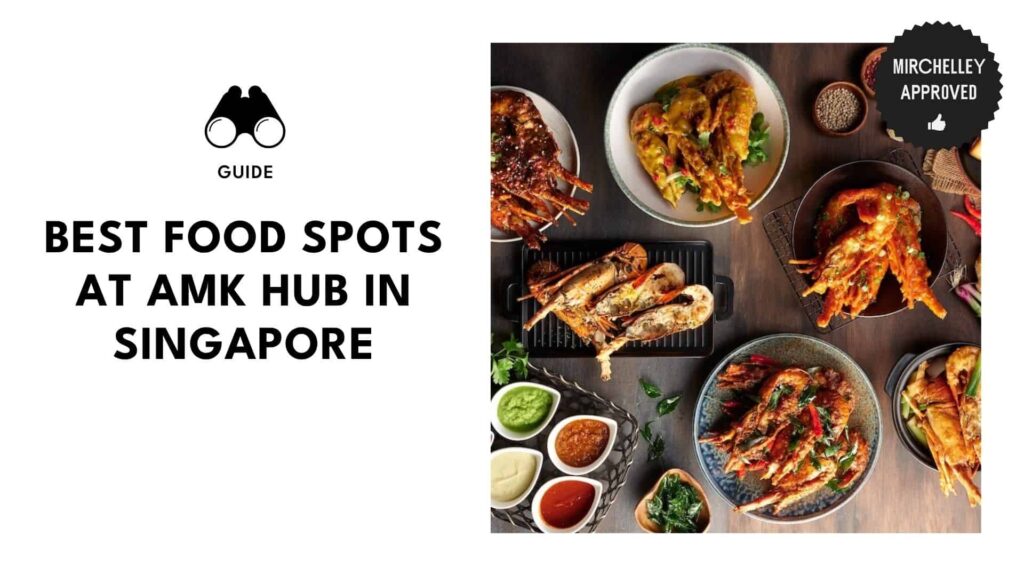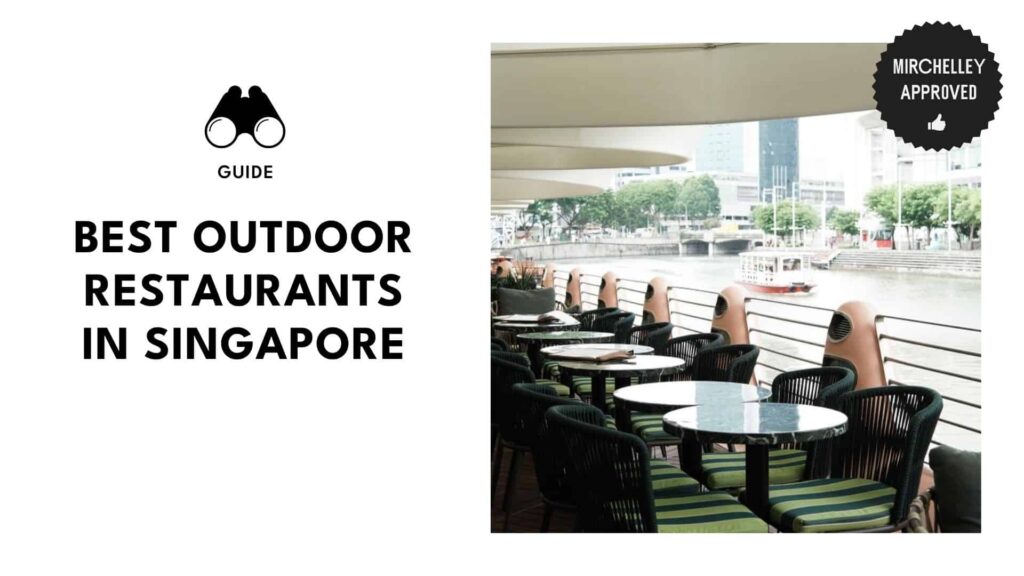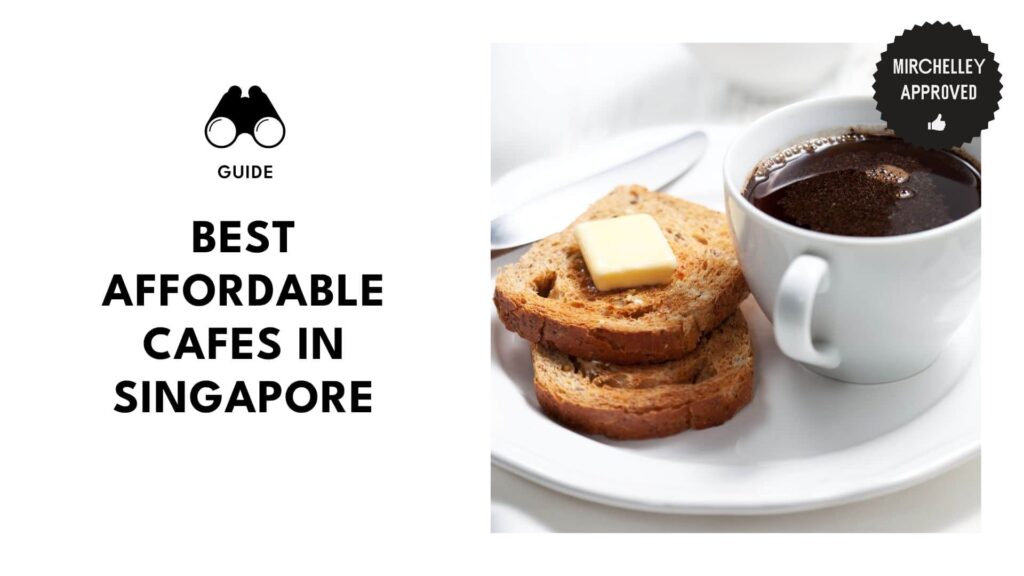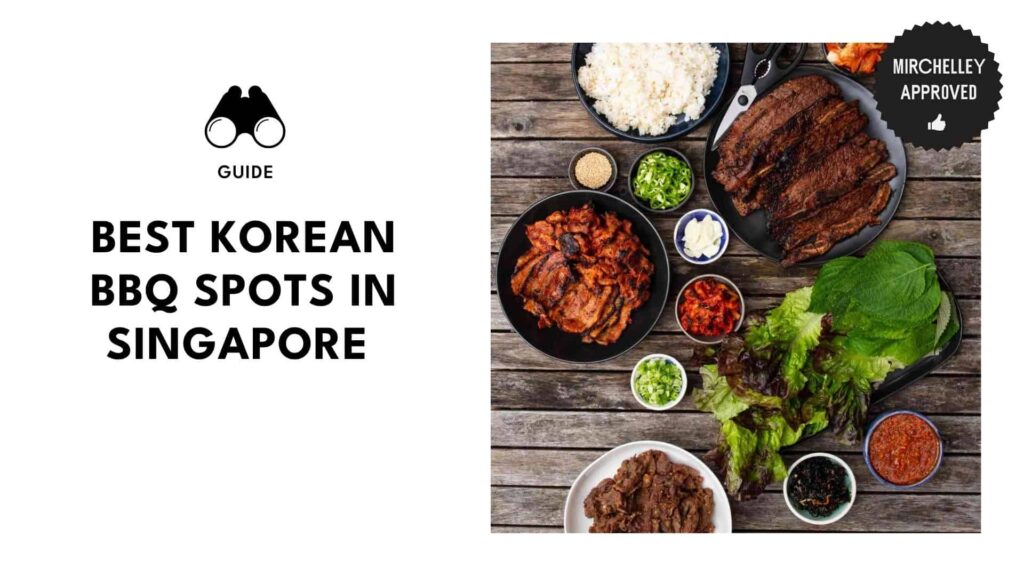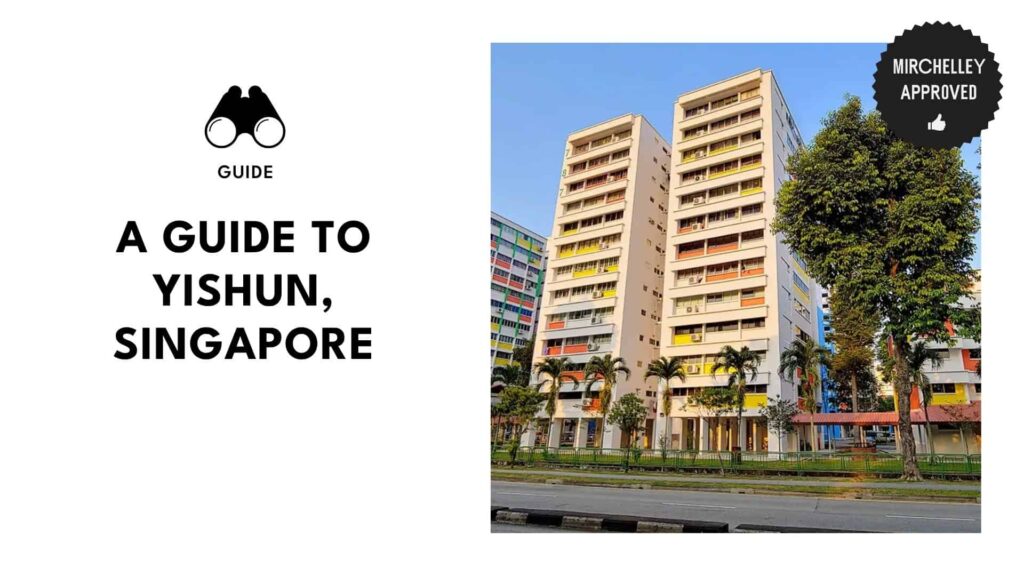Categories > Guides and Tips
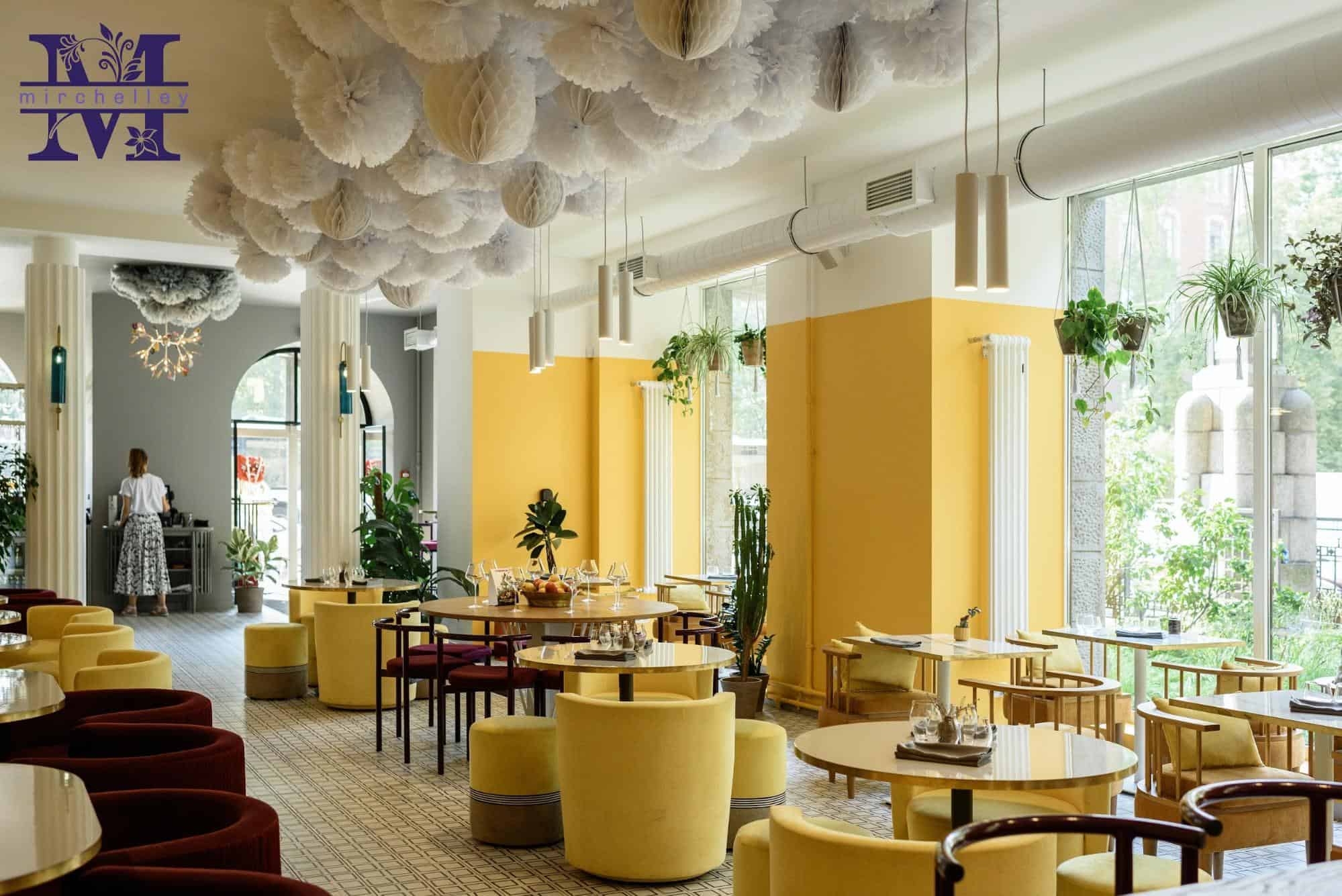
Complete Guide to Opening a Restaurant in Singapore
- Make a plan for the restaurant.
- Summary of Your Restaurant
- Business Overview
- The Layout of the Restaurant
- Sample Menu
- Management Team
- Industry Analysis
- SWOT Analysis
- Operations Plan
- Financial Analysis
- Marketing Plan
- Look for funds.
- Angel Donors
- Bank Loans
- F&B Incentives
- F&B Sector Innovation Incentives
- Incorporate your company.
- Choose a location for your business.
- Identify permits and licenses.
- Ensure compliance with the Code of Practice of Environmental Health (COPEH).
- Secure a fire certificate.
- Requirements for Fire Certificate
- Application Process for Fire Certificate
- Step 1: Appointment
- Step 2: Planning and Checking
- Step 3: Notice of Approval
- Step 4: Renovation
- Step 5: Site Inspection
- Step 6: Fire Safety Certificate Application
- Hire staff.
- Kitchen Staff
- Managerial Staff
- Floor Staff
- Identify and buy equipment for the restaurant.
- Prepare the necessary technology.
- FAQs
Singapore is famous for being the Food Capital of Asia and boasts a wide array of local and foreign cuisine that reflects the country’s celebration of diversity and culture.
As a local, I noticed that a lot of people here love exploring new food choices and thus, even hole-in-the-wall food establishments thrive in Garden City. This enthusiasm for something new encourages entrepreneurs to join the Singapore food market.
Additionally, Singaporeans prefer going out to eat instead of staying at home to cook. According to a survey by Rakuten Insight, approximately 43% of Singapore frequently dine out, which is a big deal for food-related businesses.
The thriving food industry in Singapore makes it the perfect space for entrepreneurs to open their restaurants and join other successful establishments in giving people joy through food.
For a detailed guide on how to open a restaurant in Singapore, you can check out the information provided below:
Make a plan for the restaurant.

Every successful business starts with a good plan. If you are planning to open your restaurant, here are some things that you should think about:
- Summary of your restaurant
- Business overview
- Industry analysis
- SWOT analysis
- Operations plan
- Financial analysis
- Marketing plan
Summary of Your Restaurant

The summary of your restaurant provides an overview of your concept. It must include details such as your plans for your business, your mission and vision statement, and your restaurant’s legal structures and ownership.
All of the information listed above will help give you a short overview of your restaurant and introduce people to your business concept.
If you are up for it, you can also include your restaurant’s history and the all-around strategies that you and your business partners have come up with to make the project work.
Business Overview

The business overview defines the Unique Selling Proposition (USP) of your business and why you think it would work. Additionally, it is centered around the concept you have for your restaurant.
When deciding on the concept of your business, you must ask yourself the following questions:
- What makes your restaurant concept unique from others?
- Why do you think this concept would work?
- Why are you aiming for this concept?
- Who are you catering to?
- Who is your target client?
- What are the services and products you will provide in your restaurant?
A business overview for restaurants can be divided into three major aspects:
- Layout of the restaurant or the type of services offered
- The sample menu
- The management team
The Layout of the Restaurant
The layout provides the structural design you have planned for your restaurant. This could include interior design, uniform concept, table arrangements, furniture, cutleries, and kitchen equipment.
To design your restaurant layout, ask yourself the following questions:
- Is your restaurant fine dining or fast food?
- What is your concept? Example: Italian, Japanese, Old West, Futuristic, etc.
- What should your dishes look like?
- Is your restaurant self-service or will you have to hire waitstaff?
- What are the qualifications for the staff?
- What should the uniforms look like?
- How should the staff greet the guests?
- Will your restaurant have sections for private meetings and celebrations?
When creating your restaurant layout, remember that it should match the concept that you have for your business. For example, if your concept is a Parisian cafe, your interior design and layout should resemble the elegance and finery of the cafes in France.
Sample Menu
The menu is the heart of the restaurant, so you should carefully strategize what you will include in your selection of dishes and drinks. To make it easier for you to know what foods you will serve on your menu, focus on making it match your concept.
A sample of this is a Japanese Kawaii Cafe that serves cute and pastel-colored drinks and sweets.
Management Team
The management team handles the restaurant’s operations. This should include the owner, the general manager, and the head chef.
When appointing people to your management team, you should always make their responsibilities clear so there is a clear distinction of who gets to handle which tasks in the restaurant, and shifting blames within the company could be avoided.
Industry Analysis

Industry analysis includes identifying your target, and figuring out their spending behaviors and spending power along with other demographics. To get this data, you must perform location, target audience, and competition analysis.
You can get your data through surveys and questionnaires that are distributed online or in person. As for competition analysis, you can simply visit the establishments with similar concepts as you and see how well they are performing.
SWOT Analysis

| Strength | Weakness | Opportunity | Threats |
| ●Location ●Aesthetic ●Quality service ●Pricing | ●Creating brand presence ●Inexperienced ●Popularity | ●New concept ●Fresh idea ●Trendsetter | ●Competitions ●Changing trends ●Inflation |
SWOT or Strength, Weakness, Opportunity, and Threats analysis identifies both external and internal factors that could impact your business.
Strengths are the strong points that you can identify for your restaurant. Some of the strengths that you can consider are quick service, restaurant aesthetics, pricing, and location.
Weaknesses are the points that could potentially slow the growth of your restaurant. An example of this is being new and not having enough popularity to appeal to the mass.
Identifying the weakness of your business will allow you to see which areas you should work on and remedy them with a solution. Moreover, it prepares you for what problems you might face in the future as you establish your restaurant.
Meanwhile, opportunities are identified as upcoming trends that could potentially take your business to the next level.
An example of this is the first mover advantage wherein you introduce a new business concept in your area so all customers will visit your place.
As for threats, these are the things that can negatively affect your business. Unlike weakness, you cannot do anything to control the threats.
An example of a threat in a restaurant is the sudden shortage of supplies.
Operations Plan

The operation plan will discuss how your restaurant’s daily operations would function. This can be sectioned into two major categories: staff management and customer service.
Staff management is all about finding the right employees for your business and assigning them to a specific task, such as waiting on customers. Meanwhile, customer service is all about the tasks that would affect your guests’ experience.
Financial Analysis

Financial analysis is about keeping track of the inflows and outflows of money in your business accounts. This data includes cash flow statements, cost analyses, and revenue projections.
The cash flow statement is the data that records where your money is coming from and where it’s going. It gives you a clear picture of the flow of funds in your restaurant and prevents major financial issues by keeping a record of every outflow and inflow.
Meanwhile, cost analyses predict the possible expenses you would have in your restaurant. You can gather this data by analyzing your needs first and then reviewing the market price.
Lastly, revenue projection is the estimate of how much you will make in your business venture. You can gather this data through surveys and pre-launching your products to your target audience.
Marketing Plan

Restaurant marketing is all about designing the promotional plan for your business, from prelaunch to online and offline marketing.
The restaurant launch and the subsequent marketing efforts are the areas you should focus on when creating a plan for your business. These marketing designs will reveal details on how you plan to attract customers.
The restaurant launch is an important occasion for business marketing. One of the common mistakes that most restaurants make is having a hard launch without the financial backup to provide free drinks and meals to the guests.
The free meals wills encourage people to try your products and test if it is something that they will buy again. By impressing your guests with the setup and food served in your pre-launch, you can build connections and gather patrons.
As for the subsequent marketing of your restaurant, you can use both online and offline platforms. Your marketing strategy should highlight all the qualities that make your restaurant stand out.
You can give people an idea of what your restaurant is all about by creating social media pages and an official website that features photos and blogs about your establishment.
Look for funds.

You can fund your restaurant by entering a partnership, raising capital from the bank, or finding angel donors for your business. You can also look into the incentive-based schemes created by the government to help entrepreneurs.
Angel Donors
Angel investors are private investors that help you build capital for your restaurant and guide you through the early stages of your business by sharing their expertise all in exchange for a share percentage in the company.
Angel investors can either play an active role in your business or act as sleeping partners that only provide huge shares without contributing much to decision-making.
You can find angel donors in the government-established platform called Startup SG where you can meet other business owners and investors. All you have to do is fill out the application on the page and you will receive a letter of recommendation.
Bank Loans
Bank loans allow you to borrow the money you need to start your business all in exchange for an interest rate of 11% to 13% on the principal amount of your investment.
To start a bank loan, you first need to fill up the necessary documents provided by the bank. Your business plan will also be reviewed by the bank, so make sure to create a draft before applying for a loan.
Remember that banks require collateral property before they release your loan, so be ready to present a list of collateral properties upon application. Depending on the amount, your collateral can either be your house, car, etc.
F&B Incentives
The government’s F&B sector 3 provides four major incentives for entrepreneurs interested in opening a restaurant. These are the innovation incentive, service incentive, safety incentive, and workforce development incentive.
F&B Sector Innovation Incentives
This incentive aims to develop innovative concepts by helping small and mid-size enterprises (SMEs) develop their capabilities, services, and efficiency. It is only available for SMEs.
To qualify as an SME, your business should have at least 30% of its shares held locally in Singapore. Moreover, the fixed asset you have should not exceed $15 million and the employee headcount should be no more than 200.
Incorporate your company.

To incorporate your restaurant business in Singapore, all you have to do is to register in the Bizfile portal of the Accounting and Corporate Regulatory Authority.
Incorporating your business allows you and your company to be seen as a separate entity. This limits your liability as an owner in case your business venture turns out to be unsuccessful.
- If you are a Singapore citizen with a Singpass, all you need to do to incorporate your company is to sign up in the Bizfile portal of the Accounting and Corporate Regulatory Authority. This will cost you $300 upon application.
- If you are a Singapore citizen with no Singapass, you can start by applying for a pass at Singpass.gov.sg. After that, you can proceed to the Bizfile portal in the Accounting and Corporate Regulatory Authority.
The process will cost you only $300 for the Bizfile portal application since registering for a Singpass is free.
- If you are a foreigner, you need to prepare an Entrepass before you can incorporate your business. You can apply for the Entrepass in the Ministry of Manpower’s online portal.
Applying for Entrepass only costs $105. You can pay your fee through PayNow.
After getting your Entrepass, you now need to apply for a Singpass in the Singpass.gov.sg portal. The application for this pass is free so you don’t have to worry about paying for anything.
Once you obtain your Singpass, you can register your business with the Accounting and Corporate Regulatory Authority. This process will cost you $300.
Choose a location for your business.

The location is a vital component to the success of your business. You can choose the perfect location for your restaurant based on the demographics you have gathered about your target audience, your USP, and your competitors
The perfect location is somewhere that is close to your target. For example, if your target is the working force, you should set up your restaurant near the business districts where office workers can easily find you.
You should also find a location where your USP can stand out, preferably in a place where you don’t have any competition with a similar concept. Having too much competition around will lessen the success potential of your restaurant.
Identify permits and licenses.

The permits and licenses you need for your restaurant business in Singapore are as follows:
- F&B registration
- Food shop license
- Halal certification
- Petroleum /flammable materials storage license
- Liquor license
- Public entertainment establishment license
- GST registration
| Permits and licenses | Where to apply | Fees | Requirements |
| F&B registration | Accounting and Corporate Regulatory Authority (ACRA) | $300 (for registration of the company) $15 (for company name registration) $30 (for renewal of forms) | Company constitution Shareholder’s identification and residential details Approved company name by the Accounting and Corporate Regulatory Authority (ACRA) Appointment for the application Local Singapore address Singpass |
| Food shop license | Singapore Food Agency | $195 per annum | Singpass Registration from ACRA Approval from land agencies Tenancy agreement from landlord Copy of National Identity Card for Singapore Citizens or Permanent Residence Holders (NRIC) Certificate from ACRA Certificate of registration from Registrar of Societies Certificate for basic food hygiene Cleaning program Layout plan of the premises Pest control contract Supplementary documents Food safety management plan |
| Halal certification | Go Business Singapore | $1,219 per annum | Staffing requirements with a minimum of two Muslim workers per establishment Supporting documents for raw halal materials Compliance to the 10 principles of the Singapore Muis Halal Quality Management System (HalMQ) |
| Petroleum /flammable materials storage license | Singapore Civil Defense Force | $182 to $1,320 depending on the amount of stored flammable materials | Fire safety certificate Approved plans for LPG application Professional Engineer’s certification documents for Piped LPG System Letter of undertaking on safe handling of LPG installation LPG checklist Acknowledgement letter for Emergency Response Plan Approval letter from URA and land Transport Authority for the proposed area of LPG manifold system Letter of undertaking from LPG supplier Letter of authorization from owner |
| Liquor license | Singapore Police Force | $110 to $880 per annum depending on your category | ACRA registration Proof of citizenship or identification You must be the owner or director of the company to apply Proof of good health |
| Public entertainment establishment license | Go Business Singapore | $260 to $1,200 depending on license type | List of game machines (if applicable) Limited liability partnership Supplementary data about company Applicant must either be the owner or an authorized representative |
| GST registration | Inland revenue Authority Singapore (IRAS) | Free | Business must exceed $1 million in annual revenue to be taxable Proof of revenue Identification cards Business registration from ACRA |
Ensure compliance with the Code of Practice of Environmental Health (COPEH).

COPEH is a list of objectives that your restaurant must meet to address the environmental health concerns involved in the design of your building. All rules related to food retail outlets are in section 3 of the COPEH guideline.
The general design criteria according to COPEH are as follows:
| Restaurant Area | Criteria |
| Food preparation area | The minimum area for food preparation is 10 square meters. |
| Floor | The floor shall be constructed with non-slip and impervious materials for better cleaning. The kitchen floor should be graded toward floor traps. The edge of the floor adjoining the ground should be coved. |
| Wall | The wall in the servery and preparation area should be lined with glazed tiles of not more than 1.5m to better facilitate cleaning. The walls and partitions should be light-colored. |
| Washing facilities | There should be at least one sink in the food preparation area.There should be at least one basic sink for workers in the kitchen area. This area is strictly reserved for hand-washing purposes. There should be at least one hand basin in the refreshment area of the restaurant.Handsoaps and dryers should be provided near the hand-washing facilities. |
| Centralized washing area | The centralized washing area should be located in a well-ventilated area with walls made of glazed tiles. |
| Storage | There should be separate storage facilities for food ingredients, workers’ personal belongings, tools, cleaning materials, cutlery, and food packaging.There should be a storage room for large equipment such as additional tables and chairs. |
| Equipment spacing clearance | There should be a minimum of 150 mm distance between kitchen appliances and equipment. |
| Sanitary fittings | There should be a floor trap constructed within the food preparation area for the discharge of wastewater. There should be no manholes, waste sump, inspection chambers, screen chambers, overhead sanitary pipes, and grease traps within the area where food is prepared. |
| Toilets | Toilets are only necessary if there is no public toilet provided within the area of the food stall. |
| Pest control | The restaurant should be pest-proof. Any area where pests could breed should be regularly checked. |
| Ventilation and air exhaust system | All fumes within the cooking range should be extracted immediately and eliminated with an air cleaning system. The air cleaning system should not cause any noise disturbance. Aesthetics should be considered for the exhaust outlets, especially for restaurants close to residential premises. The cleaned air should be exhausted outdoors using a flue or hood extractor fan. The air cleaning system should be regularly maintained. The restaurant should have at least 20 air changes per hour in the kitchen. There should be sufficient make-up air and negative pressure while the kitchen hood is in operation. All air ducts in the kitchen should be made of non-combustible materials. |
Secure a fire certificate.

You can obtain your fire certificate from the Singapore Civil Defense Force, which will review your restaurant’s design and venue to ensure that it meets the basic fire safety standards.
Requirements for Fire Certificate
The Singapore Civil Defense Force’s requirements for the fire certificate are:
- TFP or FSC application form
- Certification for fire safety works
- RI inspection certificates
- RI inspection report
- Certification for fire engine access road and accessway
- Letter of appointment for RI
- Declaration of regulated fire safety products
The requirements to get an approved Temporary Fire Permit (TFP) and Fire Safety Certificate (FSC) all require the guidance of a Registered Inspector (RI), so be sure to get an appointment with an RI on the SCDF website.
Most of the time, the requirements are processed by the qualified person you are working with or the architectural agency that drew the building plan for your establishment.
Application Process for Fire Certificate
The steps to get a fire certificate are as follows:
Step 1: Appointment
Get an appointment with a Qualified Person (QP), most likely an engineer or an architect. They will help you determine whether you need another QP to handle the design of your restaurant.
Step 2: Planning and Checking
The QP you select will help you draw the plan for your restaurant and prepare the documents and visual presentations you need for the formal submission of your documents to the Fire Safety and Shelter Department (FSSD).
Step 3: Notice of Approval
Your QP’s agency will obtain the notice of approval for the building plan you have submitted. This step in the process is expected to take at least 1 week.
Step 4: Renovation
Once your restaurant design had been approved, you can now commence onsite work. Fire safety will be inspected by your architect during and after the construction of your restaurant had been completed.
Step 5: Site Inspection
You will be visited by an RI who will carry out the inspection on your property. The RI will be accompanied by the contractor and the architect of your restaurant.
Step 6: Fire Safety Certificate Application
Once the RI is sure that your establishment checks all the requirements stated by the FSSD, you will be issued with form 1 and Annex A. Your QP will also follow this up with another submission for the fire safety certificate.
Hire staff.

There are three major staff classes in a restaurant: the floor staff, the managerial staff, and the kitchen staff.
1. Kitchen Staff
The kitchen staff is responsible for preparing and cooking the food for the customers. Below are some of the different categories of kitchen staff, their job profiles, qualifications, required experience, and average salary:
| Position | Job Profile | Basic Qualifications | Required Experience | Average Salary |
| Head Chef | Ensure the standard and quality of food production Inspect hygiene within the kitchen Memorize recipes | Degree in culinary science or relevant field NVQ Level 3 Level 2 health and safety in the workplace award Level 1, 2, and 3 food safety award Experience with kitchen equipment Awareness of control of substance hazardous to health regulations (COSHH) Awareness of manual handling techniques Competent level of English both spoken and written Team management skills | A minimum of 5-years experience in the relevant field | $59,071/year |
| Sous Chef | Oversee and supervise kitchen staff Assist with menu planning, management, and inventory. | Degree in culinary science or relevant field Strong knowledge of cooking methods, practices, and kitchen equipment Teamwork oriented Good leadership Excellent communication skills and interpersonal skills Understanding of MS Office and restaurant software | A minimum of 2 years experience in the relevant field | $36,769/year |
| Chef de Partie | Prepare and cook food | High school diploma or equivalent Qualification from culinary school Ability to work in a team Experience in working on a similar role Knowledge of best kitchen practices and sanitation | A minimum of 1-year experience in the relevant field | $29,417 |
| Helpers | Clean and sanitize the kitchen Assist in basic food preparation Store and receives products | General knowledge of the kitchen Cooperative Food handler license Knowledge in helping in a kitchen setting | No experience required | $24,734/year |
2. Managerial Staff
The managerial staff is responsible for handling the customer experience behind the scene by efficiently allocating the restaurant resources.
Below are some of the different types of managerial staff along with the industry average salary, qualifications, experience, and job profile:
| Position | Job Profile | Basic Qualifications | Required Experience | Average Salary |
| Manager | Ensuring incoming staff complies with the company policy Handling customer complaints Maintaining safety and food quality standard Recording payroll data Appraising staff performance Controlling operational cost Supervising daily shift operations | Customer service experience College graduate Strong leadership Acute financial management skills Knowledge of restaurant management software Extensive knowledge of food and beverage | A minimum of 3 years experience in relevant field | $38,400/year |
| Cashiers | Collect payments Verify credit payments | Basic PC knowledge Good math skills Familiarity with payment machines and software Customer satisfaction oriented Strong communication and time management skills High school degree | A minimum of 1 year experience in the relevant field | $22,800/year |
| Shopkeeper | Procure, issue, and store supplies Control inventory Keep inventory records | Basic PC knowledge Good math skills Customer satisfaction oriented Strong communication and time management skills Knowledge in Excel or other related software High school degree | A minimum of 1 year experience in the relevant field | $22,044/year |
3. Floor Staff
These are the employees that the customers encounter in the restaurant. They are responsible for serving the food, and thus, the customer experience almost entirely relies on them.
The date below includes the average salary you can give a floor staff along with their basic qualifications, experience, and job profile:
| Position | Job Profile | Basic Qualifications | Required Experience | Average Salary |
| Waiter | Welcome and seat guests Take orders Offer recommendations Memorize menu | Proven work experience Basic math skills Attentiveness and patience to customers Team spirit Flexibility to work in shifts Active listening and effective communication skills Food safety training Performs well in fast-paced environment | No experience required | $25,800/year |
| Guard | Open doors for customers Assist guests Monitor surveillance Respond to incidents | Customer satisfaction oriented Strong communication and time management skills High school degree Combat training Interpersonal skills | A minimum of 1-year experience in the relevant field | $24,000/year |
Depending on your restaurant, you might also need a bar staff and delivery staff to serve customers with specific drink orders in your restaurant’s bar area and meet the demand for door-to-door delivery services.
Identify and buy equipment for the restaurant.

The equipment necessary to run your restaurant can be divided into three major groups: kitchen equipment, operational equipment, and front-of-house equipment.
The table below will show you the list of equipment for each major category:
| Equipment Category | Necessary Tools and Equipment |
| Kitchen Equipment | Refrigerators Freezers Counters and cutting surfaces Slicers Mixers Ovens and ranges Sinks Proper safety equipment Storage shelves and racks Washing equipment Kitchen display system Point of Sale (POS) system |
| Operational equipment | Kitchen display system Point of Sale (POS) system |
| Front-of-house equipment | Menu boards Tablecloths and napkins Condiment containers Servingware |
Prepare the necessary technology.

Technologies such as point of sale (POS) systems will help you manage your restaurant better and record the inflow and outflow of cash. Modern POS systems can even help you create precise reports on your finance, inventory, and staff performance.
The best POS technology systems in Singapore are the ones listed below:
| POS | Best for | Pricing | Contact | Website |
| VEnd POS System or Lightspeed Retail X | Best for the marketplace, shop, and online use | $89 per month | +65 66816538 | https://www.vendhq.com/asia/?partner_code=eisol |
| Eats 365 F&B POS System | Best for small to large restaurant businesses | $25 to $55 per month | +65 66816538 | https://www.eats365pos.com/ |
| Shopify iPad Point of Sale | Best for cloud-based ePOS system | $29 per month | n/a | https://www.shShopify.com/?ref=eisol |
| TableReady Digital Ordering POS | Best for restaurants and cafes | $30 per month | n/a | https://www.tablereadypos.com/ |
| Shopkeep | Best for small businesses | Price will be stated after Shopkeep assessment. | +1 (844) 986 2191 | https://www.lightspeedhq.com/shopkeep/ |
FAQs
Opening your restaurant in Singapore can be a tedious process that involves plenty of paperwork. Be sure to connect with professionals before you start your business venture.
In Singapore, as long as you have the necessary documents and funds, you will have no trouble running your food business. However, you should make sure that you have something unique to offer to the crowd to keep your restaurant afloat.
